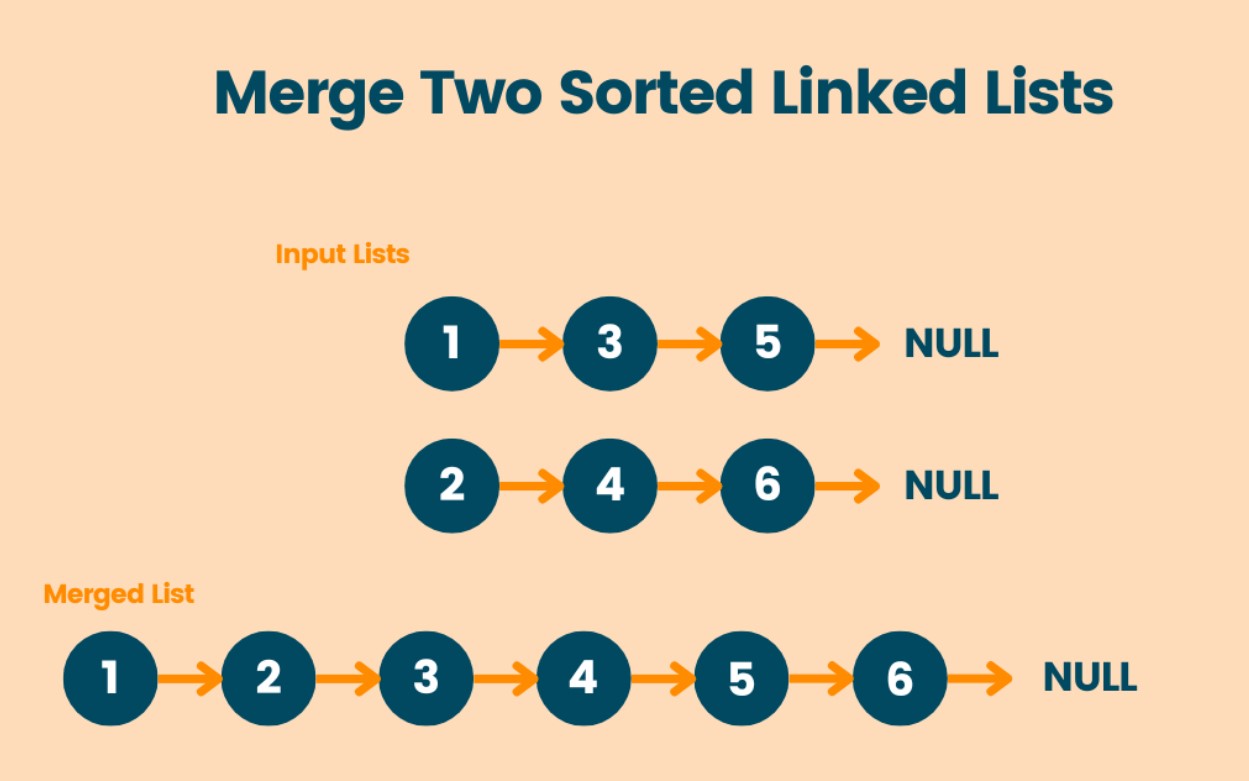
February 27, 2025
Merging Two Sorted Linked Lists: Strategies and Implementations in C++
Have you ever had to merge two sorted linked lists while keeping their order? Linked lists and memory management make it difficult, despite its simplicity. Every programmer merges two sorted lists, whether they are developing an algorithm or optimizing memory. In this blog, we will examine iterative and recursive techniques and C++ linked list merging best practices.
Understanding Linked Lists
We must understand linked lists before merging. Link lists are linear data structures having memory-stored nodes that retain data and a pointer to the next node. Linked lists are flexible when data size is uncertain or changes often since they do not need contiguous memory allocation like arrays.
Two main forms of linked lists:
- In singly linked lists, each node refers to the next.
- In doubly linked lists, nodes hold references to both the next and previous nodes.
The Merging Problem: Key Challenges
This keeps order by combining two sorted linked lists. The sorting of lists after merging is crucial for efficient algorithms like merge sort.
Many factors may make it difficult:
- It could be due to memory allocation and control are crucial during merging,
- Handle edge cases like empty lists, lists with varying lengths, and lists with multiple values,
- And it could be due to reduced iterations and overhead.
With these issues in mind, let's examine two efficient methods for merging sorted linked lists: iterative and recursive.
Strategy #1: Iterative Approach for Merging
Its easy to combine two sorted linked lists repeatedly. This method combines nodes from both lists one by one.
Working:
- Initialize two pointers, one for each list.
- Compare the current node data in both lists.
- Add the smaller node to the result list and forward its pointer.
- Repeat through each list until it is exhausted.
- Finally, add the remaining non-empty list nodes to the result.
Code Implementation (C++)
ListNode* mergeTwoLists(ListNode* list1, ListNode* list2) {
// Create a dummy node to simplify merging process
ListNode* dummy = new ListNode(0);
ListNode* current = dummy;
while (list1 != nullptr && list2 != nullptr) {
if (list1->val < list2->val) {
current->next = list1;
list1 = list1->next;
} else {
current->next = list2;
list2 = list2->next;
}
current = current->next;
}
// Append remaining nodes from the non-empty list
if (list1 != nullptr) current->next = list1;
if (list2 != nullptr) current->next = list2;
return dummy->next;
}Time Complexity: O(n), where both lists have n nodes. We only visit each list once, thus time complexity is linear.
Strategy #2: Recursive Approach for Merging
Because it breaks the problem into smaller parts, recursive merging of sorted linked lists is easy to understand and implement.
Working:
- Return the other list if one is empty.
- Combine the remaining nodes after comparing the existing ones in both lists.
Unwinding recursion creates the merged list.
Code Implementation (C++)
ListNode* mergeTwoLists(ListNode* list1, ListNode* list2) {
// Base case: if one list is empty, return the other
if (!list1) return list2;
if (!list2) return list1;
// Compare current nodes and recursively merge
if (list1->val < list2->val) {
list1->next = mergeTwoLists(list1->next, list2);
return list1;
} else {
list2->next = mergeTwoLists(list1, list2->next);
return list2;
}
}
Time Complexity: For every n there are nodes, the time complexity is O(n). The function runs linearly since it processes one node at a time.
Conclusion
Algorithm efficiency and memory management are fundamental concerns when merging two sorted linked lists. Whether you use recursive for elegance or iterative for simplicity, both methods maintain the merged list sorted.
Try both methods and then choose one.
734 views
